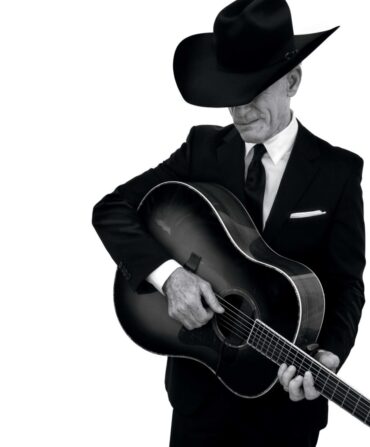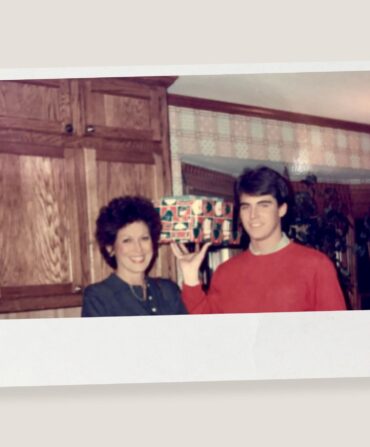At his shop in Bloomingdale, Georgia, Randy Wood slides a battered cardboard box off a makeshift shelf and opens the flaps to reveal hundreds of flat shards of mother-of-pearl. Using a jeweler’s saw, the master luthier will carve the pieces of pearl into ornate scrolls, then inlay them into the fingerboards and heads of his guitars and mandolins. The artistry is stunning, but it’s only one of the reasons his instruments rank among the best in the business. “You pick up a mandolin and play just a few notes and you know right away,” says Red Henry, a forty-year bluegrass veteran and member of the band Red and Murphy & Co. Henry owns not one but three Randy Wood mandolins, including the first one Wood ever made and the one he created for Bill Monroe, the father of bluegrass. “Between the sound and the ease of playing and the structural solidity of the instruments,” he says, “it all adds up to the best building I know.” Wood’s list of clients provides further proof: He’s made instruments for Eric Clapton, Keith Richards, Emmylou Harris, Vassar Clements, and Clarence White, to name a few.
Out behind his shop, the seventy-year-old Wood opens the metal door to the old shipping container that serves as his woodshed. It’s stacked to the roof with long, wide boards and thin-planed planks. “Most builders keep their wood in a temperature- and moisture-controlled environment,” he says. “But I try to toughen any wood up before I use it.” He begins with a band saw, carving the wood into shape, and then shaves it to the desired thickness on a drum sander. The key to an instrument’s sound, Wood explains, is the quality of the wood and how much of it you take away. “Most manufactured instruments are made with twice the weight they need,” he says. “They have to build a guitar that an idiot can’t tear up.”

Photo: Gately Williams
Wood details a mandolin neck.
A self-taught craftsman, Wood got his start building instruments with Dobro flat-picker Tut Taylor and banjoist Rual Yarbrough, and in 1970 he joined GTR, Inc., a retail and repair shop in Nashville, Tennessee, opened by Taylor and vintage guitar guru George Gruhn. Nestled in the shadows of Ryman Auditorium, GTR became a hot spot for stars to hang out before their shows. Elvis made his way to the building, and Wood wound up laying the mother-of-pearl script on the fingerboard of the King’s ebony Gibson Dove guitar. He also engraved acorns and oak leaves on Johnny Cash’s Martin D-28S.
Nashville’s hours were long and the business intense, so in the late 1970s Wood and his wife, Irene, decamped to a small house on the Isle of Hope outside of Savannah. He kept a small wood shop in his two-car garage, and he took on a few repair jobs for regular customers. They started referring him to other musicians for repair work and to make them custom instruments, too. “I was building a business without even trying,” Wood says. By 1999, his venture had grown too large to operate out of his garage, so he bought a piece of land in Bloomingdale, set up shop, and then built a house next door. Though Wood has made instruments for some of music’s biggest stars, most of his customers are not professional musicians. “The pros don’t have any money,” he says with a laugh. “My main bread and butter comes from the weekend musicians, because they have jobs.” A custom guitar starts around $3,500; a mandolin begins at $6,500.
Wood’s gentle Georgia drawl and easygoing style belie a steady, restless energy. Over the past thirteen years, that drive has transformed his small shop into a bluegrass destination. Wood purchased an old metal garage and created Randy Wood’s Pickin Parlor Concert Hall next to his shop. Little Roy Lewis & Lizzy Long, the Boxcars, Laurence Juber, and Junior Brown are just a few bluegrass and Americana artists who have performed in the intimate 100-seat venue. And since the musicians and their audiences needed something to eat, Wood added a barbecue restaurant, and later enclosed the porch to create an air-conditioned dining room. Chef Mac McInerney now runs the restaurant and a catering business out of the kitchen and regularly adds a fine-dining plate alongside the barbecue on concert nights.

Photo: Gately Williams
A selection of mandolins.
Back in Wood’s rambling workshop, teetering stacks of lumber and fret boards and guitar backs in various stages of completion are piled high on a mishmash of wooden worktables. Wood picks up a wafer-thin guitar top and flips it over to show the slender strips of wood glued to the back. “It takes about four hours just to shape the braces on a top,” he says. “And another four hours to build braces on the back.” A commercial guitar factory can produce an entire instrument in that amount of time, Wood notes, but for him that’s not the point. “Last year I think I made six mandolins and sixteen or eighteen guitars,” he says. “We can afford to spend the time.”









